WATERVILLE — As Vermont dairy farmer Les Pike and his wife, Claire, looked toward the future, they had a problem. Too many frigid mornings of milkings left him without circulation in his fingers and her with carpal tunnel and aching shoulders. Two of their three children wanted to continue the farm, but son Dan never liked milking and daughter Suzi was over trying to wrestle frisky Jersey cows into the milking machines.
Two years ago, they brought in robots to do the milking.
Which enabled Mr. and Mrs. Pike to take a drive over to Maine this past week to share their story with Maine dairy farmers facing similar challenges, whether it’s keeping the business going to pass onto the next generation, or cutting labor costs and yet improving productivity (and maybe getting more milk in the tank).
The setting was a Governor’s Restaurant, where a ham steak still comes with a pineapple ring and cherry and one doesn’t exactly expect to be talking about the latest technological innovations. But the questions about the pluses and minuses of voluntary milking systems, or robotic milking systems, came fast and furious: what about maintenance, hidden costs, heat detection, somatic cell counts and extra electric costs associated with having a robot living in the barn?

Jenny Jurdak and Amber Hunter milk cows in the milking parlor at Suzie Q Dairy in Unity. Shawn Patrick Ouellette/Staff Photographer
Wait, are we talking about C-3PO here? Or a “Blade Runner” style android?
The robotic milking systems do involve at least one arm, but that’s as close as they come. Several producers, including the Swedish-based Delaval, the Dutch company Lely and GEA (the brand the Pikes invested in), make them based on a similar concept. The cow, wearing an electronic collar or tagging device, gets hungry, wanders into the barn, heads into a stall set up with an automatic feeder and while she’s enjoying a nosh, the robot moves into place, cleans and dries her teat (the technical term is quarters) and then latches on. Meanwhile the collar is tracking and sending health data, not just how much she’s eating or producing, but if she’s in heat and how much fat is in her milk. If Daisy is off her feed, the farmer can find out while he or she is in town running errands, via a smartphone alert.
And if Daisy would like to be milked at 4 a.m. on winter’s coldest morning, a farmer could sleep through the whole thing. In theory (more on that later). This leads to happy, peaceful cows, according to Pike.
“Robotics, never mind what it does for the lifestyle of the people,” Pike said. “If you like cows, then you’ll like robotics.”
He smiled ruefully before adding, “Not that that means you can afford it.”
HOW MUCH IS THAT ROBOT IN THE WINDOW?
The price tag ranges from $200,000 to $270,000, depending on the brand, for a system that can milk about 60 head. The price drops slightly, about $25,000, for additional units. Pike was upfront about getting a deal because the manufacturer wanted a farmer in Vermont using GEA technology.

Amber Hunter, 15, leads cows to the more traditional milking parlor at Suzie Q Dairy in Unity. Maine farms have yet to venture into robotics – cost is frequently the major stumbling block. Shawn Patrick Ouellette/Staff Photographer
The robotic technology has been around since the early 1990s and is used widely throughout Europe and countries such as New Zealand but has been slow to catch on in the United States. That’s changing. Dozens of dairy farmers in Vermont now use them, and a few years ago, New Hampshire’s Tullando Farms switched to a robotic system.
But Maine, while it is the fifth largest milk producer in the Northeastern region according to the Maine Dairy Industry Association, has yet to venture into robotics. That’s not to say Maine farmers are milking by hand; virtually all use milking machines – once farmers attach the cows, the machine does the heavy lifting (or rather, the pulling).
The most obvious reason Maine farmers haven’t made the move already is money. Their numbers are shrinking, seemingly every day. There are 248 dairies in Maine now, compared to 263 last May and 315 in 2010. This isn’t by any means a Maine problem only – Vermont lost more than half of its dairy farms between 2004 and 2010 and New Hampshire 46 percent in the same period.
Milk prices are very low, and Maine dairies have taken hit after hit, including the collapse of what had looked to be a promising venture, the Maine’s Own Organic cooperative known as Moo. According to the 2012 Northeast Dairy Farm Summary, which surveyed 504 dairy farms, profitability declined by 48 percent that year, a good portion of which could be attributed to increase in feed prices as well as crop inputs, like fertilizers and seeds. It might not seem like a great time to make a big capital investment.

Jenny Jurdak leads cows toward the milking parlor to be milked at Suzie Q Dairy in Unity. Shawn Patrick Ouellette/Staff Photographer
“Nobody really wants to be the first one,” said Julie-Marie Bickford, executive director of the Maine Dairy Industry Association. “Nobody wants to be the first to put hundreds of thousands of dollars into equipment.”
But based on the turnout of 65 in Waterville Wednesday, which included about 30 dairy farmers, educators from the University of Maine and a group from the Maine Department of Agriculture, Conservation and Forestry’s Division of Quality Assurance & Regulation (which would be responsible for inspecting any robotic systems), there is definite interest.
In coming weeks University of Maine Cooperative Extension faculty plan to discuss bringing robotics to Witter Farm, the University of Maine teaching dairy farm in Old Town. At one point, Witter Farm supplied all the milk to the Orono campus, but the herd is much smaller now. Robotics would make it easier to grow that facility. Jenni Tilton-Flood of Flood Brothers Farm, Maine’s biggest dairy, is all for that plan. “It would be an amazing teaching tool,” she said.
Not that Flood Brothers is likely to install the machines, because with 1,650 head to milk daily, the expense of changing the farm’s infrastructure would be “immense,” she said. Also, the family has a new rotary milking parlor (like a merry-go-round).
But for smaller farmers like Susan Hunter of Suzie Q’s Dairy in Unity, robotics are very appealing. She and her husband, who died in December after a fight with cancer, had already picked out the brand they wanted (a Galaxy Astrea). Her mixed herd of 60 Holstein, Brown Swiss, and Jerseys, is just the right size for one “box” or one robot to milk. And like the Pikes, she has another generation waiting in the wings, a son and daughter, who want a more efficient and productive operation. As well as a life outside the barn.
“In the summertime, you put in a 15-hour day and you have no time for your family,” Hunter said. “You do need to take that time. And this is a machine that is going to make it convenient for smaller dairy farms to enjoy that time.”

Amber Hunter 15, feeds fresh milk to a calf at Suzie Q Dairy in Unity. Shawn Patrick Ouellette/Staff Photographer
She probably won’t be the first to go robot – her debt load is too large at present – but she thinks robotics will catch on Maine.
“I know that once it came into the state of Maine, farmers my size and even those with 100 to 200 head would be interested,” Hunter said.
A FAN’S NOTES
Richard Kersbergen, the University of Maine Cooperative Extension Professor for Sustainable Dairy and Forage Systems who organized the conference, thinks the time is ripe. While he was on sabbatical in the fall of 2014, Kersbergen spent two months in the Netherlands, where robotic systems are in use on about half of the country’s dairy farms. He visited 30 to 40 farms he said.
“I went to one farm that milked 300 cows,” he told conference attendees. “I was there for three hours and I never saw a single person.”
That might sound eerie, like a scene out of “The Leftovers.” But the cows didn’t care. They were being milked by machines. Contentedly.
“You see a difference in how the animals behave,” Kersbergen said. “They are much quieter, and it is a much more calm atmosphere because they are not being pushed around all the time.”
The systems caught on in Europe in large part because labor costs there are so much higher; labor continues to be, relatively speaking, cheap in the United States, Kersbergen said. That said, labor represents a good chunk, about 16 percent, of a dairy farmer’s expense.
“If you talk to most dairy farms, the hardest job is finding someone to milk cows and milk them well,” Kersbergen said.

Cows getting milked in the milking parlor at Suzie-Q Dairy in Unity. Shawn Patrick Ouellette/Staff Photographer
Hunter confirms that. “We’ve had so many milkers that come in with big ideas,” she said. Reality is an eye opener, figuratively and literally.
“The hours you milk aren’t the most favorable times,” Hunter said, putting it politely.
Then there are the milkers who just didn’t measure up.
“A couple of them have left because I didn’t like the way they were handling my animals,” Hunter said. Maine’s benchmark for labor efficiency is below other states. While it is true that smaller dairies in Maine rely heavily on unpaid family labor overall, the number of workers per cow is higher. That’s where robotics could help.
Among the conference attendees was Gary Foss of Mainely NuPulse, a dairy equipment distributor in Wales who has contracted with Galaxy Astrea to sell its robotic system. He has had nibbles (including from Hunter) but no sales yet. He’s also selling robotic calf feeders. When he showed up with one to display in his booth at this year’s Agricultural Trades Show in Augusta, he said. “A lot of people said, ‘Is this a pellet stove?'”
Kate Folger of Stonyvale Farms in Exeter spoke at the conference about the success she’s had with a robotic calf feeder. The animals started using it in November, and while it took some training (like gentle push into the machine), they’ve not only caught on, “they are growing wonderfully and staying very hydrated,” she said. An electronic ear tag feeds her health information constantly.
The robot may not be human, but incongruously, “It is a little more like Mother Nature,” she said. “They don’t have to eat as much at a time.” Instead, they can eat when they feel like it and their systems are better able to utilize the nutrients.
Stonyvale employs about 23 full and part time employees, including nine family members and milks between 900 and 1,100 cows a day. The family would potentially be interested in the robotic milking systems, Folger said, especially as the farm continues to grow.
DON’T HOLD BACK
If there are now robotic systems milking cows in Vermont, New Hampshire and Massachusetts, why have they been so slow to catch on in Maine? Maybe it is what happens when you are at the end of the line, geographically speaking. Or a fear of technology?

Jenny Jurdak and Amber Hunter milk cows in the milking parlor at Suzie Q Dairy in Unity. Shawn Patrick Ouellette/Staff Photographer
“I don’t think it is so much fear of technology,” Bickford said. “It might be a fear of change.”
But there is one possible technological problem. Despite lobbying by the Maine Farm Bureau for improvements to the state’s broadband infrastructure, Maine ranks 37th in the nation in terms of access to broadband. And the robotic systems work with smartphones.
“If something goes wrong with the system, it is designed to send you a text message,” Bickford pointed out. “If you don’t have good cell coverage, that is not going to work.”
The systems also requires one other thing that requires good connectivity.
“They break down,” Pike told conference goers. “I don’t care what brand it is. Or if they don’t break down, they have regular software updates.”
There were audible groans in the room.
FREEDOM
Chris Duffy represents the ultimate next-generation conversion to robotics. He grew up on Great Brook Farm in Carlisle, Massachusetts, where he helped his father Mark put the family cows into tie stalls to milk them, three times a day. He wanted to stay on the farm, but the milking schedule was brutal. “It just eats into your life,” he said. “It eats into the welfare of your own body.”
Then five years ago, Great Brook went robotic. Duffy was impressed, and after college, he interned with Delaval, helping install a system with 24 robots on a big New Zealand farm. Now he works for the robotics company full time doing installations all over the Northeast, typically spending two weeks at dairies, installing the robots and training the farmers. Some clients might think that the robotics lead to more of a hands-off operation, but that’s wrong, he said. What they do is free up time to tend to all the other chores.
But probably not to sleep in.
Hunter said she might. A bit. But only on Sundays.
“Maybe until 6,” she said. “Or 5:30.”
Old habits die hard.
Send questions/comments to the editors.


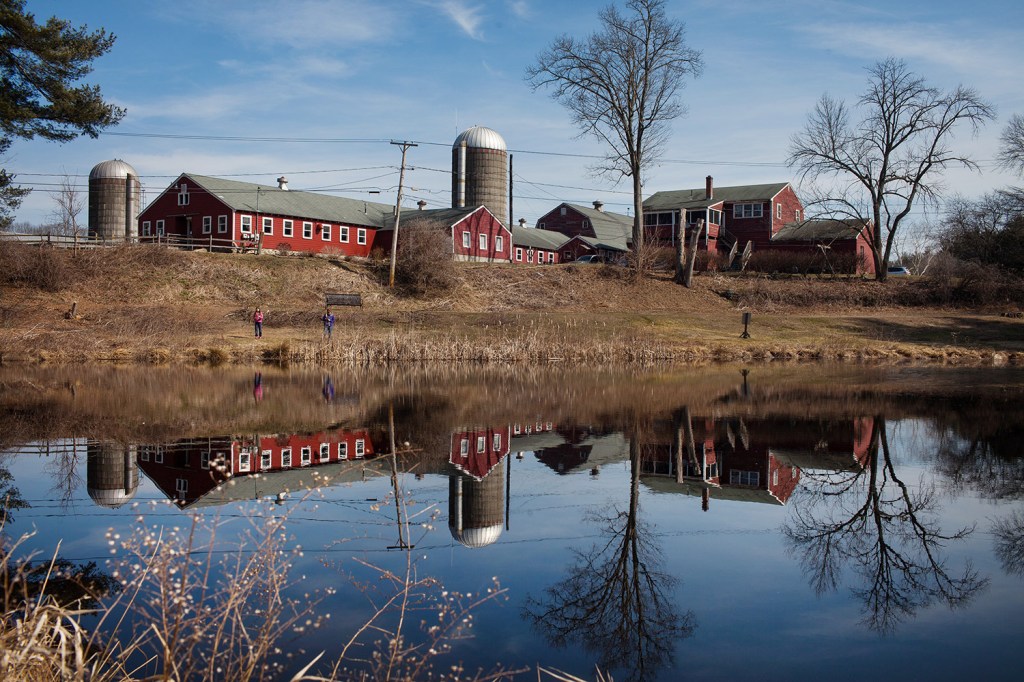
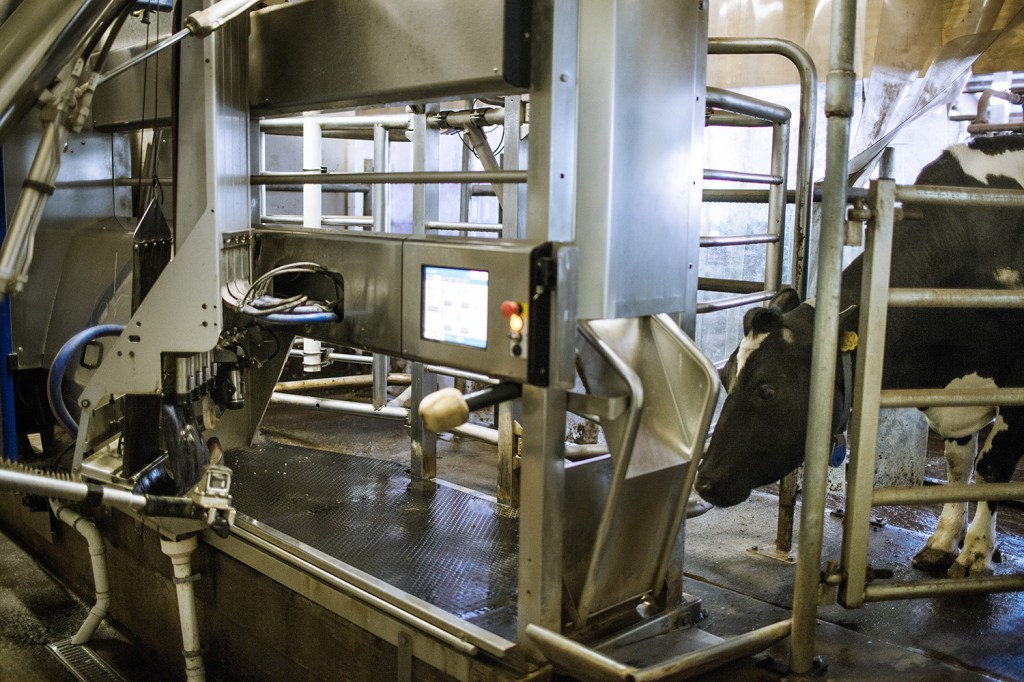
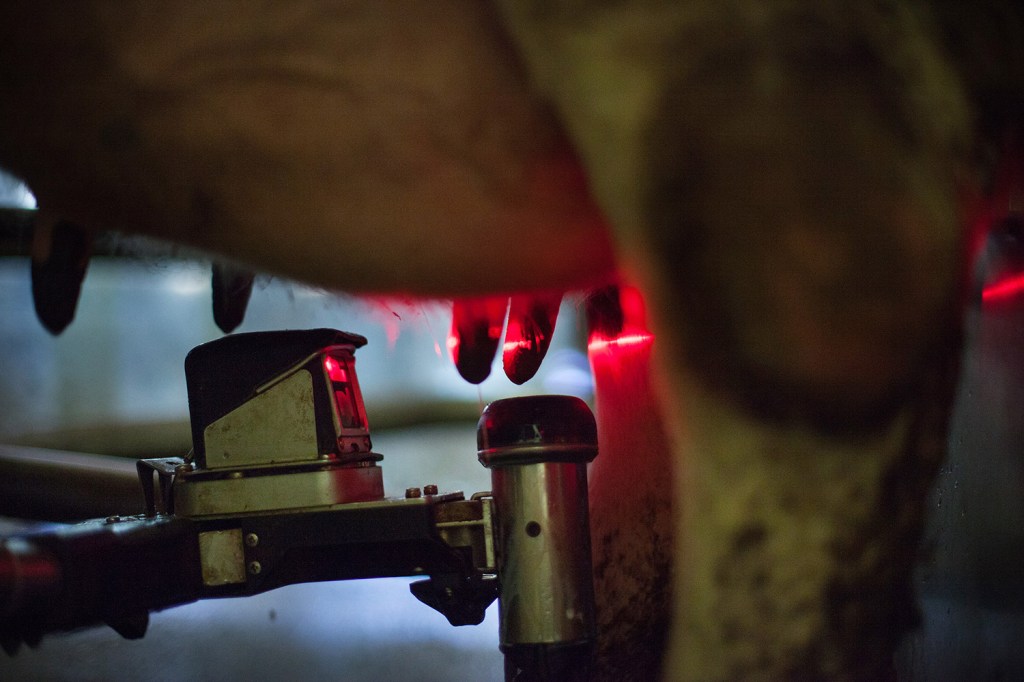
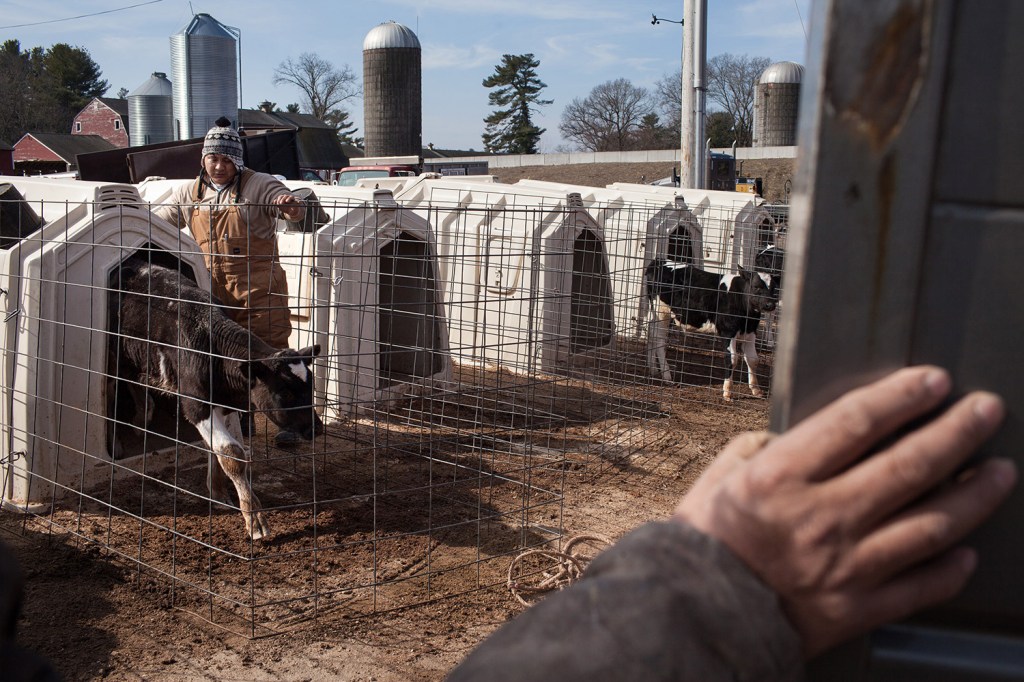
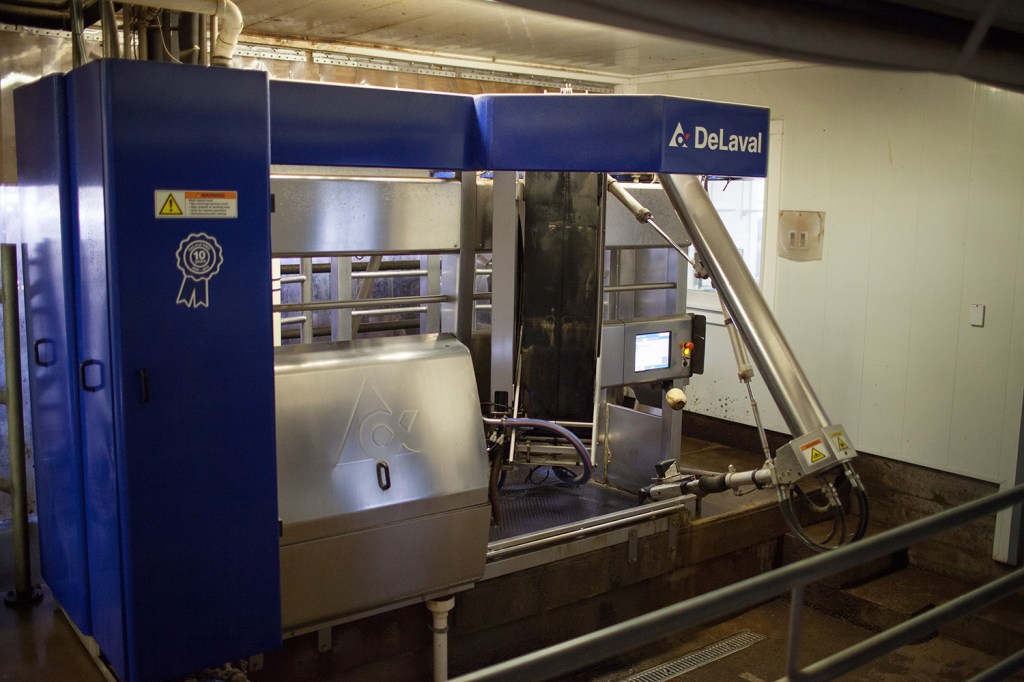
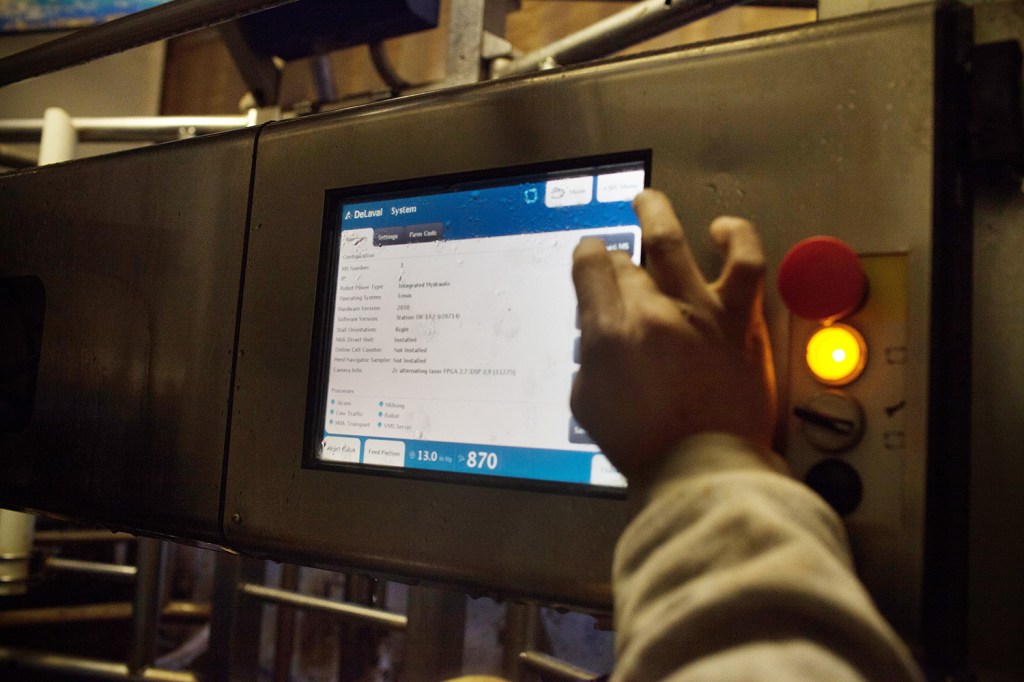
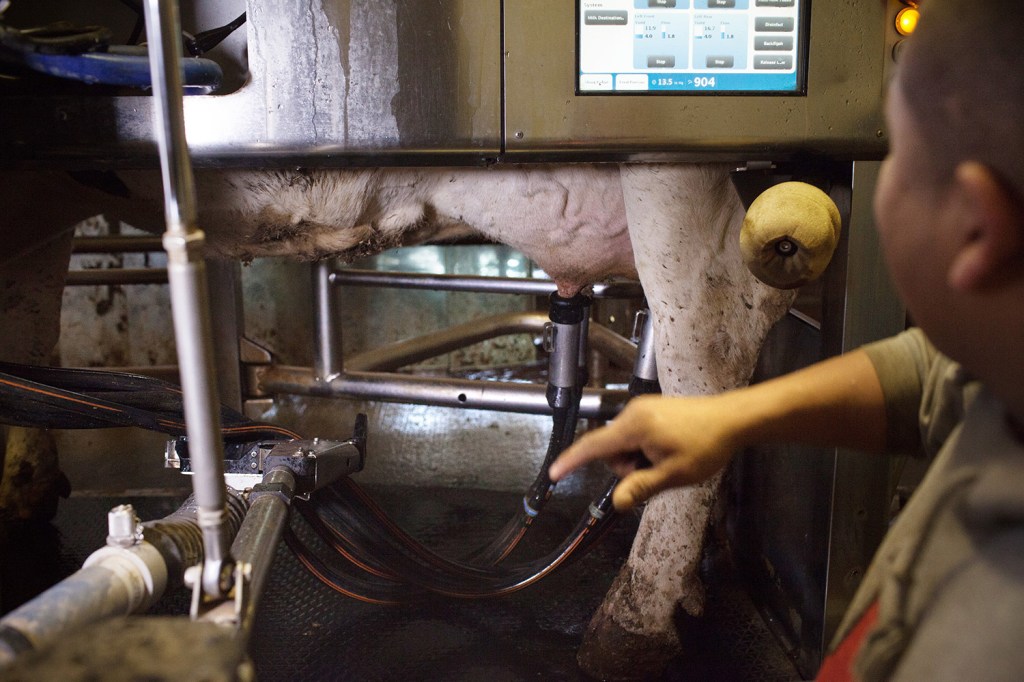

Success. Please wait for the page to reload. If the page does not reload within 5 seconds, please refresh the page.
Enter your email and password to access comments.
Hi, to comment on stories you must . This profile is in addition to your subscription and website login.
Already have a commenting profile? .
Invalid username/password.
Please check your email to confirm and complete your registration.
Only subscribers are eligible to post comments. Please subscribe or login first for digital access. Here’s why.
Use the form below to reset your password. When you've submitted your account email, we will send an email with a reset code.